
It may surprise you to learn that Colonial women did not quilt very much. This was for several reasons. One the colonial women that first came to America did not have much spare time- they often had large families that they had to cook for along with helping with many chores- sickness was very common in that era and tending to the sick family members often took a lot of the Colonial woman's time.
The rare exception to woman of that era making quilts was if they were well off enough to have hired help- this allowed them the time to quilt. Since the days were short and the nights long during the winter most quilting was done May through November.
Since imported print fabric was hard to come by most quilts were one piece of fabric for the top to which the precious print fabric they did have was used for appliques on this top.
Many coverlets were used as bed covering back then and records indicate that many woman prepared the fibers and then paid to have them woven into coverlets.
Bed rugs were another form of bed covering. Some were manufactured and some were homemade.
The most economical form of bed covering was coarse manufactured blankets.
Around 1840 the textile industry had gown enough that fabric was readily available to most families.
Pioneer woman migrating to the West knew that their woman friends and family probably would never be seen again. To help ease the pain of losing each other many friendship quilts were made and given to the pioneer woman that was leaving for the journey west.
As many quilts and hand tied comforters as possible were made for the westward journey- not only to use during the trip but to use in their new homes as the time to quilt would be very limited at first due to helping with all the tasks that came with clearing the land and building cabins- not to mention still doing all the cooking and child rearing and tending the the sick.
Mnay times quilts were used to cover windows and doorways in the log cabins or to partition off "rooms".
As time went on and the pioneers had the tasks of building their cabins done there was more time for the Pioneer women to do needlework and quilting became a popular way of socializing via quilting bees. Pioneer quilts were made from what ever fabric the pioneer women had- sometimes new but most of the time it was scraps of worn out clothing- dresses, shirts, and night clothes.
Wanting to follow in the footsteps of my Pilgrim& Pioneer grandmothers a few years ago I decided I would make a quilt. Pictured to the right is that quilt- my one and only finished quilt to date for as like my Pilgrim & Pioneer grandmothers there are just too many tasks to do in one day!
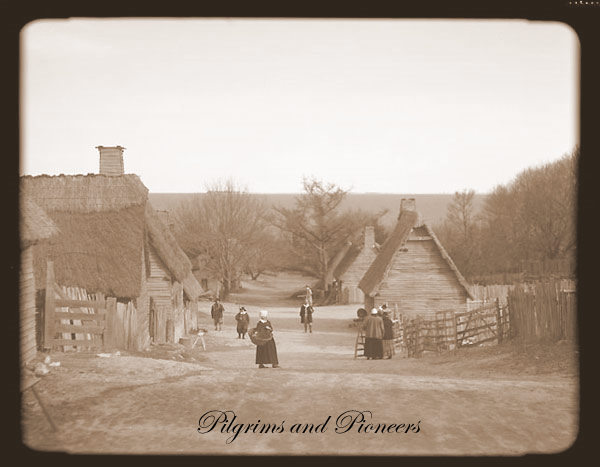



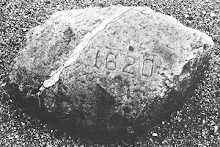
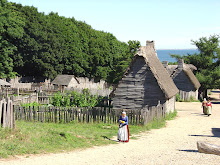






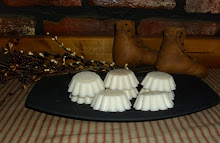


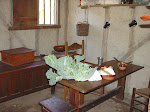
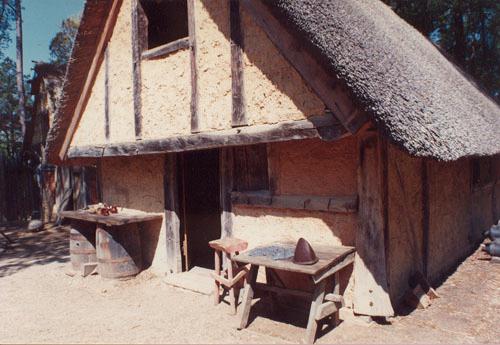
1 comment:
Thank you for the wonderful historical perspective. That is a lovely quilt! It does take a substantial time commitment to make a large quilt!
Post a Comment